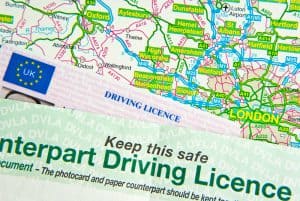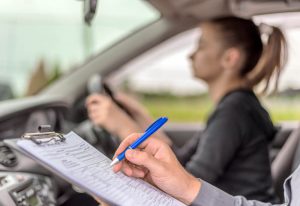What Not to Do on Your Driving Test: 5 Crucial Things
More help for you
One thing you only want to do once is take your driving test.
If you’re hoping to pass in 2018, then aim to be in the 53% of drivers who succeed first time.
But how? What are the most common pitfalls that you need to avoid during that all-important 40 minutes? Check out our guide and nail the five most likely faults that examiners will spot!
5 Things an Examiner Will Notice if You Don’t Do
- 1
Get a Good Look Out – Observation at Junctions
The boss of all of the reasons that people fail their tests. Not properly observing what’s going on in the road as you approach a junction has topped the list of test misdemeanors since 2006/07.
When you approach a junction, do it correctly. Road look clear? Check again. Are there any walls blocking your line of vision? Parked vehicles obscuring what you can see? Look right, look left, then look right again. Don’t even think about pulling out until you’re 100% sure that you’re doing so safely.Check the following video for observation tips.
- 2
Make Use of Your Mirrors When Changing Direction
Almost always right up there in the top three reasons for failing a driving test, if you don’t use your mirrors properly, then the examiner will clock it. And we’re not talking about paying lip service to doing it, either; you’ve got to really use your mirrors and make it obvious to the examiner that you’re doing so.
What did you see in your mirrors? You need to demonstrate that you can process the visual information and act accordingly. Check the following video and learn how to use your mirrors.
- 3
Steering Your Way to Success
Don’t lose your nerve. In test conditions, you might find yourself gripping the wheel so hard, it might as well be welded to your hands. To add to the tension, your arms are so rigid that you can barely feel them anymore. You cannot control your steering like this. You’re going to have to dig deep, and find a way of relaxing enough to steer smoothly. Take some deep breaths, locate your calm, and force yourself to loosen up enough to steer smoothly, without jerking or over-steering. Here is how to steer correctly.
- 4
All Right Now – Turning Right at Junctions
Positioning itself at number four in the 2015/16 DVLA Hit Parade (ask your dad) of reasons for failure, turning right at junctions scuppers many a driving test. Mirrors, signal, speed, position and observation are what the examiner will be looking at. Is it an open or closed junction? Either way, your approach needs to be slow and steady, around 5 mph, as you work out what’s going on and what you need to do. You might not even need to stop; in which case, you should proceed in first gear as you look around for pedestrians and potential hazards.
Closed junction? You need to avoid being too hesitant when pulling out; make sure you don’t stall and make the right judgment call when it comes to edging out. If you cause the flow of traffic to stop or slow down, then expect your instructor to notice it. Here is a short guide for beginners how to approach junctions correctly.
- 5
Perfect Positioning
An easy one to get wrong, getting your road position correct and keeping it there is crucial. The ‘perfect’ position of the vehicle on a clear road is the centre of the left hand side. But how about when there are obstacles in the road? Slow your speed and aim to leave a gap of approximately one metre when passing cyclists or parked cars.
Be vigilant – if you are constantly aware of your vehicle’s presence on the road and how it affects other road users, then chances are your positioning is good. For example, if you stop in a line of traffic, is it possible to do so while enabling buses or other oncoming vehicles to pass? The following video will help you find your own method for getting your position on the road.
Don’t Panic!
Being clued up to the five top reasons for failing your test is vital, but no less important is being able to cope with the potential stress of the driving test itself.
Practice your driving skills until you feel completely confident, but also rehearse your coping abilities when under pressure. Breathing techniques to settle your nerves can be quickly learned and might make a real difference to how calmly you respond to whatever the test throws at you!



